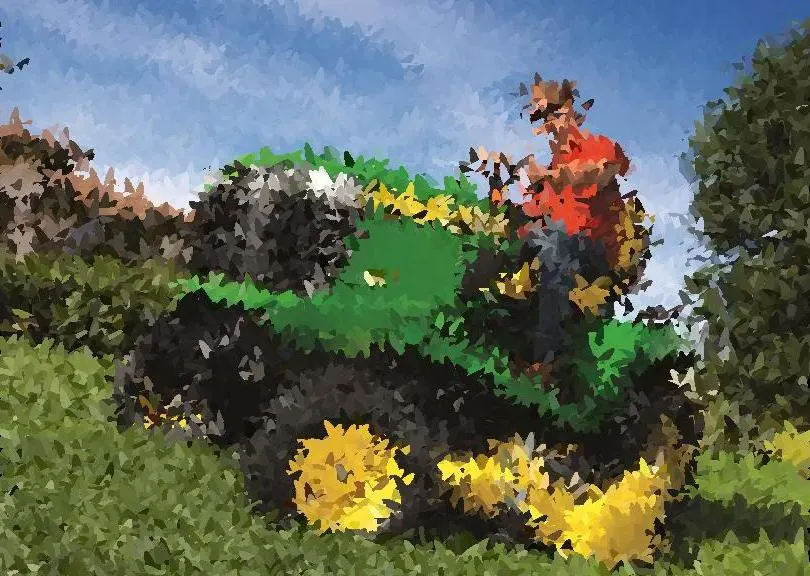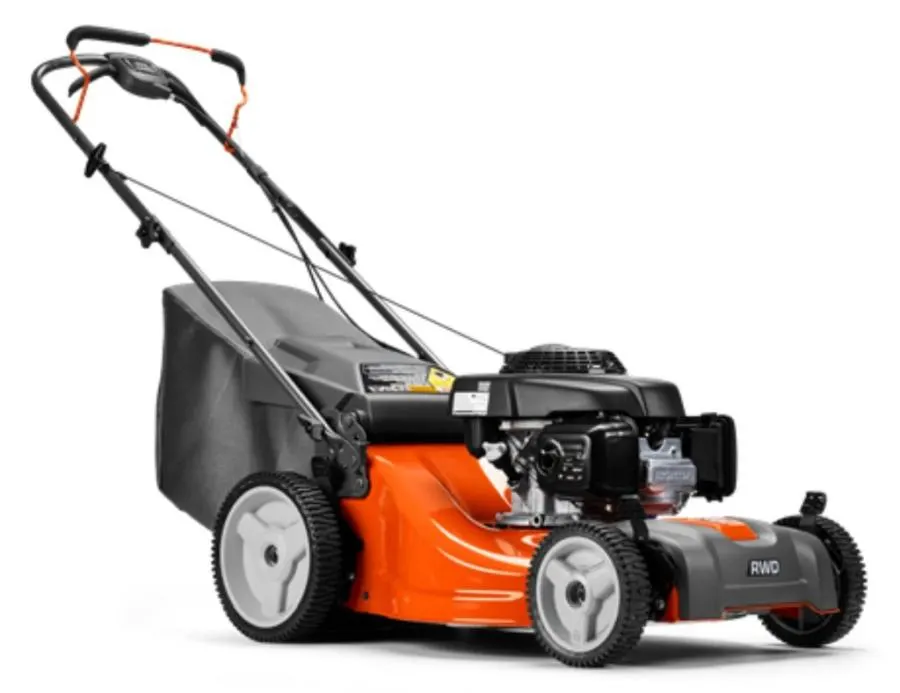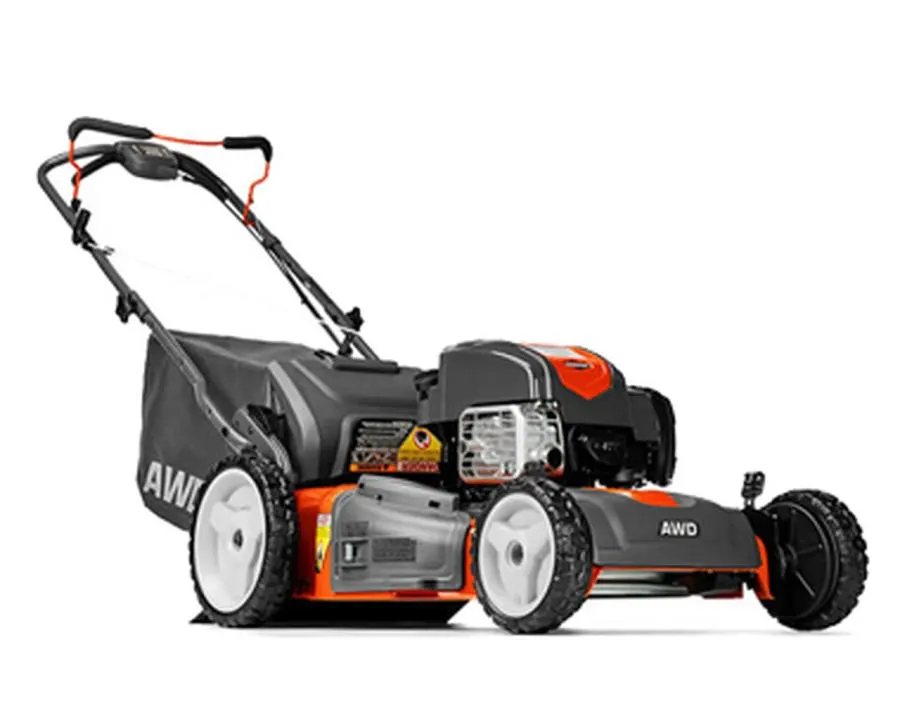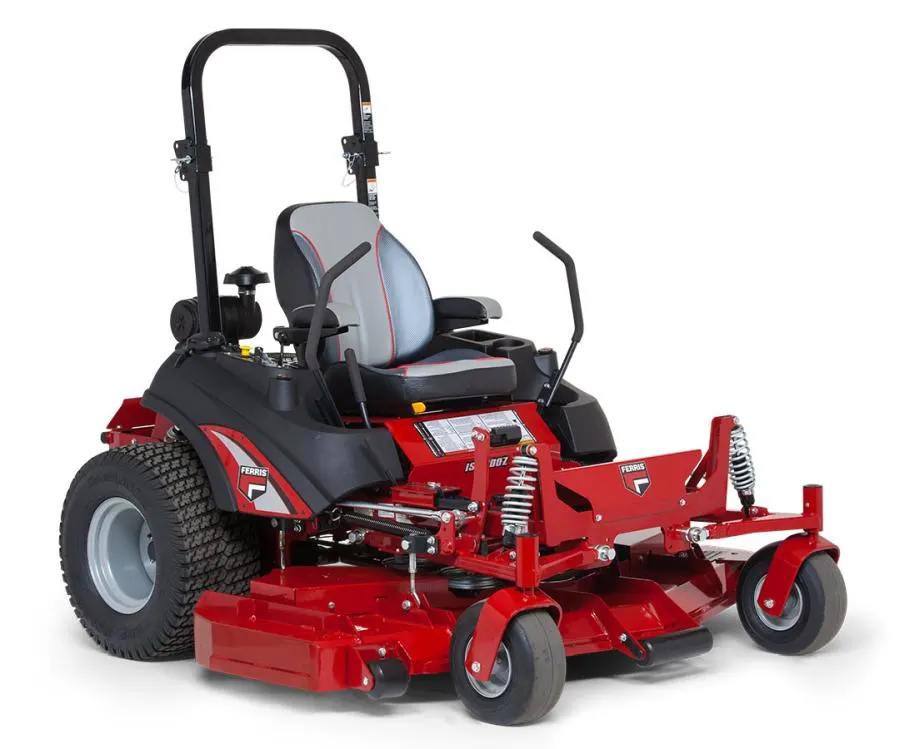Basically, there are several types of lawnmowers in the market today, and there are enough choices to make when you want to decide on the kind of mower that would suit your needs. While the size of your lawn and the terrain come into consideration, the amount of time you wish to spend on maintaining your lawn is also an important factor in your decision-making process.
However, asides from these factors, there is another important factor to consider when shopping for your lawnmower, and that is the type of drive that your mower has. If you really want to make your mowing experience a lot easier and stress-free, you may want to save yourself the stress that comes with your old push-style mowing method and select a self-propelled mower. Usually, a self-propelled lawnmower has two main types of drive which include the front wheel and rear-wheel drive.
Front vs. Rear-Propelled Lawnmower: How to Choose?
Both a front and a rear-propelled lawnmower are good machines. What the best propulsion system is for you depends on your lawn. If your lawn contains inclines, slopes, or hills, then a rear-wheel-drive mower is probably the best choice. On the other hand, if your lawn is flat and maneuvering is important, a front-wheel mower is probably a good choice.

Typically, when a gearbox drives the rear wheels, it’s referred to as the rear wheel propulsion mower. On the other hand, when the gearbox drives the front wheels, it is known as the front wheel propulsion mower. Front propulsion wheel drive mowers are great for level terrain. Front-wheel mowers pull the mower along the ground while the rear-propelled mowers drive the mower transversely.
Contents
Types of Drives That Exist
Instead of using so much effort before getting your mower to move, a self-propelled mower can help you to maintain a lush, neat, and healthy lawn with little to no hassle. All the latest models of self-propelled mowers on the market are available in three drive types. They include the front-wheel, rear-wheel, and all-wheel drive. Now each of these drive types actually go a long way in making your lawn look lush and healthy all season. However, no matter how similar they look, each type has unique features and characteristics that distinguish them, especially when handling. So, before you choose which drive type is right for you and your lawn, it is important to know what you are buying and consider the advantages and disadvantages of each type.
● Front Wheel Propulsion
Just as the name implies, the front wheels are responsible for propulsion. So the front wheels on the mower of front-wheel-drive propulsion are the ones that help propel the mower or move it forward. This means if the gearbox propels the front wheels, then it is a front-wheel-drive mower.
During mowing, the power of the front wheels allows the mower to be pulled along as they turn. A front-wheel drive is great for lawns with lots of turns. They are also best suited for flat surfaces or terrains, but definitely not for lawns with steep inclines, hills, or valleys. Front-wheel-drive models are the most affordable drive type, and they allow you to effortlessly steer your mower around yard obstacles such as shrubs, sprinklers, trees, and other lawn ornaments.
– Advantages of a front-wheel-drive mower
- It is easy to maneuver: With a front-wheel-drive mower, you can easily change the direction of your mower by simply tilting the mower on its back wheels. This feature makes it great for yards that require a lot of turns and maneuverability.
- It is well suited for flat yards: The front-wheel-drive mower is the best option for lawns with flat terrains that do not have any hills. This feature is even more efficient when the front wheels of the mower are planted on the ground.

– Disadvantages of Front-Wheel Drive Mowers
- Not suitable for irregular yards: To move the mower forward, a front-wheel mower must always have its wheels firmly placed on the ground. This feature makes this type of wheel drive less suitable for hilly and bumpy terrains or lawns that require you to raise the wheels. In this case, mowing becomes ineffective, especially when the mower’s wheels bounce up off the lawn.
- Not suitable for inclines: If your lawn has inclines or hilly terrains, there might be a need for you to lift the front wheels and blade off the ground, hence preventing the propel system. Now with all this pressure and weight towards the front of the mower, it can be a bit difficult to move your mower uphill.
● Rear-Wheel propulsion
When the gearbox propels the rear wheels instead of the front, then it is a rear-wheel-drive mower. The rear-wheel-drive mower is the main power of several self-propelled models. It is suitable for hills, slopes, and flat surfaces; it is also good for terrain with valleys and steep inclines. No matter what you encounter or how your terrain looks, the rear-wheel-drive mower still turns and pushes your mower ahead. Although the rear-wheel-drive models do not possess the maneuverability of front-wheel-drive models, they are still well suited for large, flat, and wide-open spaces.
– Advantages of the Rear Wheel Drive Mowers
- It makes traction easier: Since the rear wheels of the mower are firmly fixed on the ground, it gives room for more traction. This particular feature is even more helpful when bagging grass since most of the weight is over the rear wheels.
- It creates a more pristine lawn: Since traction is much better with this model, mowing in a straight line is even easier. Hence you can get a more accurate cut, which will give your lawn that pristine and professional look.
- It is the best option for irregular lawns: A rear-wheel-drive mower can function well on slopes, inclines, and hilly terrains. It has been designed to have extra control, especially on crooked, bumpy, and uneven lawns.

– Disadvantages of Rear-Wheel Drive Mowers
- Little or no maneuverability: Since the rear-wheel-drive is only slightly less efficient on yards that involve a lot of turning and shifting, it requires you to manually alter the speed or disengage the drive to take a turn.
- Weight distribution: When mowing, the bag automatically fills up with grass, causing the excess weight to build towards the rear. This brings about better and easier traction. However, it may require you to do a little more pushing if the bag is not full.
● All Wheel Drive Mower
When the gearbox propels all four wheels, then it is all-wheel-drive propulsion. An all-wheel-drive mower supplies power to all four wheels of your lawnmower, providing room for more traction up and down the hills, over sloppy terrains, and over wet grass. Besides these, the all-wheel-drive mower also makes use of a self-propel drive system that automatically adapts to your walking speed and for optimum comfort and ease. For homeowners or anyone looking for reliability entry-level mower, an all-wheel-drive mower is a perfect option.
– Advantages of All-Wheel Drive Mowers
- Optimal traction: Since all the wheels are on the ground, you will get better traction even on hilly or sloppy yards.
- Better balance: The all-wheel-drive mower is more balanced than the others because power is distributed evenly across all four wheels, hence making mowing simple even in tough conditions.
– Disadvantages of All-Wheel Drive Mowers
- More costly: An all-wheel-drive mower is typically more expensive than the others, and many models may require regular maintenance over time.
- Limited maneuverability: Just like the rear-wheel-drive system, the all-wheel-drive type also requires you to change the speed manually or disengage the drive to turn

● What to choose?
Now that you have understood each type of wheel drive and its functionality, the next question that comes to mind is: which one is good for my lawn? Firstly, what type of lawn do you have? It may seem cliché, but the type of lawn you have determines the type of wheel drive to purchase when shopping for your lawnmower.
If you have a lawn with inclines, slopes, or hills, then a rear-wheel-drive mower is probably the best kind of wheel drive for you. As discussed earlier, they do not lose traction anytime. Therefore, you don’t have to worry about getting stuck on a hill because they glide right up.
On the other hand, front-wheel drive mowers don’t handle hills as the rear wheel drives do, and I’m sure you don’t want to end up pushing your mower up a hill (trust me, it is definitely not what you want to do when you buy a self-propelled mower).
If your lawn has a flat terrain, you can either choose the rear, or the front-wheel-drive mower. Yes, the two models are great. Both the rear-wheel drive and front-wheel drive mowers maintain optimal traction on flat terrains.
Which Drive Is Best For Making Turns?
When it comes to making turns, the rear-wheel-drive mowers are much more maneuverable than the front-wheel-drive mowers. Because the front-wheel-drive mowers are only designed to move forward, you may have to lift the front wheels in order to make sharp turns. However, rear-wheel-drive mowers are able to handle quicker turns, and this comes in handy if you are trying to mow around lawn ornaments, trees, or bushes.
The bagger also affects weight distribution. Because the bagger is located at the back of the mower, rear-wheel-drive mowers will have more traction, especially when the bag fills up. However, the opposite is true for front-wheel-drive mowers as they will lose traction on the front wheels as the weight shifts to the back.

Why won’t my Lawnmower Drive or Self Propel?
Now, this is another important issue when it comes to the propulsion of your lawnmower. There are several reasons why your lawn mower won’t drive, or self propel. If the wheels on your mower do not turn, you might need to check the following parts: the wheels, the transmission, and the drive cable. These three parts are the most common symptoms, and with our simple DIY repair guide, you can easily fix them. However, if you need specific instructions related to your model, you may need to refer to the manual provided by the manufacturer.
● Bungled Belts
Now, this is one of the most problematic parts of the drive system in a self-propelled lawnmower. Basically, the drive belt is the part responsible for transferring power from the engine to the transmission. There exist a simple clutch, which is usually controlled by a cable that allows the belt to engage the transmission. Over time, the belt will start to wear and stretch. Normally, in the drive cable, there is a tensioner built to adjust and compensate for belt stretching. However, the belt eventually tends to stretch to a point where its extra length can no longer be compensated for. Now at this point, the belt needs replacement.
Normally, within years of its use, the belt begins to wear thin, and eventually, it will wear thin to a point where it begins to slip off the pulleys. If worn too thin, the belt often breaks off and eventually requires replacement. Belts are made from rubber, and due to this, they harden and become brittle over time. This is even evident if your mower sits for a long period of time without being used. As it hardens, the belt will form cracks which can cause the belt to break easily. This is why the belt on your lawnmower should be inspected at least twice a year to check its condition. If you notice that the belt has developed cracks or is worn thin, don’t wait until it leaves you stuck with a half-mown lawn before replacing it. It is better to replace it immediately you notice cracks.
– How to replace your lawn mower belt
Replacing the belt on your mower is actually a quite straight forward repair. You just need to pay close attention.
- Tilt the mower over: Tilt the mower on its side so that you can access the underside of the mower. While tilting, ensure that you tilt the mower with the carburetor to leak out the fuel leak out.
- Remove the blade and belt cover: Remove the blade and any belt shield in order to access the belt. There’s usually a second cover that will need to be removed from the top of the deck or at the rear of the mower so as to have access to the belt. Once removed, there is also a belt cover around the transmission pulley that needs to be loosened so that the belt can be accessed.
- Replace the belt: Replace the belt simply by placing it around the pulleys. Then replace all the covers and blade, and finally use the drive cable adjuster to tension the belt tightly.
● Wheels
The drive wheels of a self-propelled lawnmower are usually another reason your mower won’t self-drive, and they are the last component of the drive system. Usually, the drive wheels have a gear that has either been molded into them or attached to them by the manufacturers. Typically, the gear of the drive wheel connects to that of the drive shaft. Now the drive wheel gear is usually plastic, and the drive shaft gear is metal. Once the plastic gear on the drive wheel moves over the shaft, it begins to wear down and eventually slip. The rate of wear increases if the mower is used in dirty conditions, steep slopes, or if the drive is suddenly started and stopped frequently.
In addition, the drive wheel gear on your mower should not be lubricated. These gears are easily exposed to dirt and other debris, so if they are lubricated, the dirt and debris will stick to the grease and form a thick paste that will wear down the gears quickly.
– How do I replace the drive wheel?
Replacing the drive wheel is usually very easy to do. It is similar for most models.
- Replace the old wheel: Start by removing the hubcap from the wheel in order to expose the wheel nut. Once done, remove the wheel nut, which will cause the wheel to slide off the drive shaft. After removing the wheel, take a moment to clean the drive shaft gear. Then install a new drive wheel simply by sliding it over the driveshaft, which would cause the drive gear to align with the wheel gear.
- Secure the wheel nut: Finally, secure the wheel with the wheel nut and replace the hubcap.
● Tired Transmissions
The transmission of a self-propelled lawnmower is one of the important parts of the drive system. The transmission is that which conveys power from the engine of your mower to the wheels. It rotates the axle to drive the mower wheels, causing the mower to move forward. It is responsible for controlling the speed which it does by altering the torque depending on how the rider wants it. For modern lawnmowers, the transmissions are usually trouble-free and do not often require maintenance. However, just like any other moving part, when subjected to enough use, it will wear out and will need to be repaired or eventually replaced. Extreme conditions such as a dusty terrain or steep hills can cause the transmission of your lawnmower to wear out faster.
To know if the transmission has worn out is easy. When you begin to notice signs such as grinding gears, jerky operation, and if the transmission pulley is rotating and the wheels are not, then the transmission needs repair or replacement. Some transmissions have parts that can be rebuilt while others need to be replaced when they fail.
Now rebuilding a mower transmission is a much more complicated repair. You may need to consider options like the repair time, the difficulty, and the overall cost. Hence simply replacing a faulty transmission might be the best option. Depending on the model, the replacement of the transmission may require different amounts of disassembly.
– How to replace a tired transmission
- Remove the transmission components: Start by removing the drive belt and the drive wheels. Next, remove the clutch on both sides of the mower.
- Inspect the components: There are usually bearings that the drive shafts pass through on the mower’s deck. After removing the old transmission, carefully inspect the drive belt, the bearings or bushings, and the clutch assemblies. If any of these components are worn, replace them. It is actually easier and better to service these parts when you have broken down the drive instead of waiting for them to fail in the future.
- Replace the transmission: Replace the transmission with the newer one and install the other components of the drive system. Also, please take note of the step in the breakdown of the parts because it may serve as an important reference while reassembling complicated components such as wheel clutches. Refer to each step to help you remember and ensure that you install each part in the correct order.
- Adjust the belt tension: After reassembling, use the adjuster on the drive cable to tension the drive belt properly.
● The Drive Cable
The drive cable is that component that connects the drive bail to the transmission and allows you to engage and disengage the mower’s self-propel drive. In some cases, it controls the speed of the mower. The cable connects to the bail and the transmission on both ends using either a cast connector or a metal hook. On one end of the cable, there is usually an adjuster that allows you to fit or adjust the tension of the drive belt.
Like other drive train components, drive cables also wear out over time and eventually fail. The common types of failure include breakage of the cast connectors or metal hooks or snapping the cable itself. These usually occur if the mower is left out in the rain, causing the cable to rust and break down much sooner than that of a mower that is stored out of the elements. Another disadvantage of storing your mower in the weather is that it can be easily susceptible to corrosion which forms inside the cable’s sheath. This will cause the cable to become sticky and not operate properly. In addition, accidents may happen that can cause damage to the cable; the cable may be caught in a shrub, the cable may rub against a fence or wall, and so on. All these can cause the cable to be worn thin and eventually break into two.
Now if you think that the drive cable might be the reason why your mower cannot self-propel, there are a couple of things to check in order to confirm. During normal operation, the drive bail springs back to the stop position once you let go of it. If your drive bail doesn’t, then the cable might have been broken into two. Carefully observe the connectors on both sides of the cable to make sure they are not broken. If they are, replacing them is the next best option. Now replacing a broken drive cable is actually quite easy.
– How to replace the cable
- Remove the fasteners: Start by removing the connector from each end of the drive bail at the top of your mower’s handle. Next, cut off the cable ties and remove the fasteners that hold the cable to the handle.
- Access the cable: Once done, access the cable at the transmission. You can do this by tilting the mower or sometimes by removing the panel at the rear end of the mower.
- Replace the cable: Next, remove the cable at the point where it is attached to the transmission. To install the new cable, do it in reverse order, and make sure you replace all cable ties that were cut when removing the old one. This is to ensure that the cable does not snag on shrubs or low trees.
- Adjust the belt tension: Finally, adjust the tension on the drive belt using the adjuster on the drive cable.
● Disabling Dirt
This is also an important factor that affects the wheels of your lawnmower. Usually, the underside of your lawnmower is bombarded with dirt, grass clippings, or debris during mowing. Now a skipping belt might be caused by the dirt that is caught in the drive wheel region. However, it is easy to clear out the debris. Just remove the hubcaps, the cotter pins, and washers, and remove the wheels from the adjusters. Carefully clean the debris in this region without leaving out the teeth of the drive wheel gears, the dust cover, and the pinion. Once you are done cleaning, replace the wheels, the washers on the adjusters and secure them tightly with the cotter pin.
Conclusion
Having a clear and deep understanding of what each lawnmower type has to offer can better help you manage your lawn. Now that you know and have solved these problems prepare to enjoy a hassle-free mowing and a pristine lawn. Good luck!

I appreciate the detailed information on the advantages and disadvantages of each drive type.
Thank you, Patsy! Glad you found the information helpful in making a decision. Let me know if you have any other questions.
This article provided me with valuable information about lawnmower drives.
Thank you, Kim! I’m glad you found the information on lawnmower drives valuable. If you have any more questions or need further assistance, feel free to reach out. Happy mowing!
I never realized how much of a difference the drive type can make in mowing.
Glad you found the information helpful, Chris! The type of drive can indeed make a big difference in mowing. Best of luck with your lawn care!
This article has helped me understand the importance of drive types in lawnmowers.
Thank you for sharing your thoughts, Jimmie! Understanding drive types is crucial for a smooth mowing experience. Glad the article helped you grasp the importance.
I had no idea there were so many factors to consider when choosing a lawnmower.
Glad you found the information helpful, Randy. Choosing a lawnmower can be overwhelming with all the factors to consider. Good luck with your decision!
Very interesting article! I learned a lot from it.
Thank you, Vickie! I’m glad you found the article informative. Feel free to reach out if you have any questions about choosing the right lawnmower drive for your lawn. Happy mowing!
“Interesting article! I didn’t know there were so many factors to consider when choosing a lawnmower drive. Very informative and helpful for someone like me.”
“Thank you, Caleb! I’m glad you found the article helpful in choosing a lawnmower drive. Feel free to reach out if you have any more questions!”
The section on bungled belts was very informative.
Thank you, Sharlene! I’m glad you found the section informative. If you have any more questions or need further clarification, feel free to reach out. Happy mowing!
I now know how to replace my lawnmower belt thanks to this article.
Thank you for your comment, Raymond! I’m glad the article helped you with replacing your lawnmower belt. If you have any other questions or need more assistance, feel free to ask. Happy mowing!
Thank you for explaining the differences between front and rear-wheel drive mowers.
Thank you for your feedback, Dolores. I’m glad you found the information on front and rear-wheel drive mowers helpful. Happy mowing!
What causes a lawnmower to lose its driving ability or self-propel feature?
It could be due to a worn-out belt or a faulty transmission. Check these components to determine the cause of the issue.
Great video resources provided in the article.
Thank you, Carla! I’m glad you found the video resources helpful. Let me know if you have any other questions about lawnmowers. Enjoy your mowing experience!